The Technology Council of Australia hired consultancy Accenture to conduct a strategic market assessment of the Australian technology sector with the aim of shaping policy development for what is now the country’s third largest industry after mining and banking. 10 graphs from the report on the sector’s growth and outlook.
The technology sector is a major pillar of the Australian economy, contributing $ 167 billion to the economy. The sector’s contribution has increased 79% since 2016, more than quadrupling the average growth of other industries, partly due to an acceleration due to accelerated digital adoption during Covid-19.
The technology sector is currently the third highest contributor to GDP in Australia, behind mining and banking and ahead of healthcare, construction and retail.
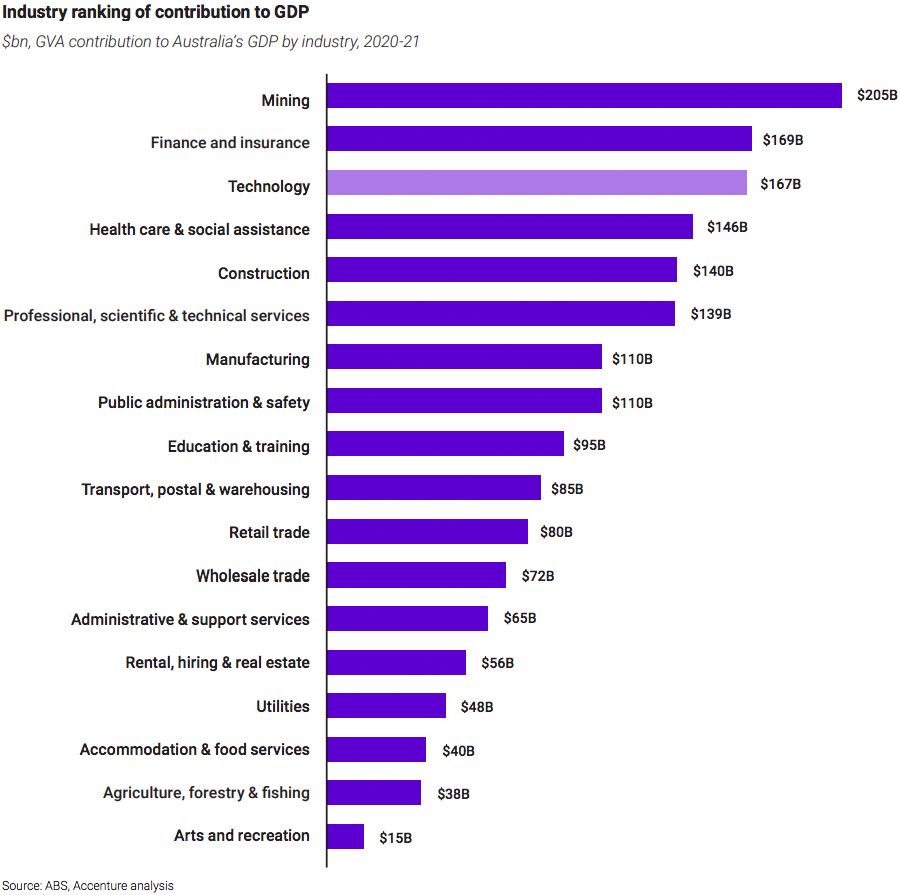
The technology sector’s direct contribution is $ 76 billion. This segment encompasses the value generated by categories such as software, analytics, business applications, technology intelligence, technology-based infrastructure, e-commerce, digital media, and online payment solutions.
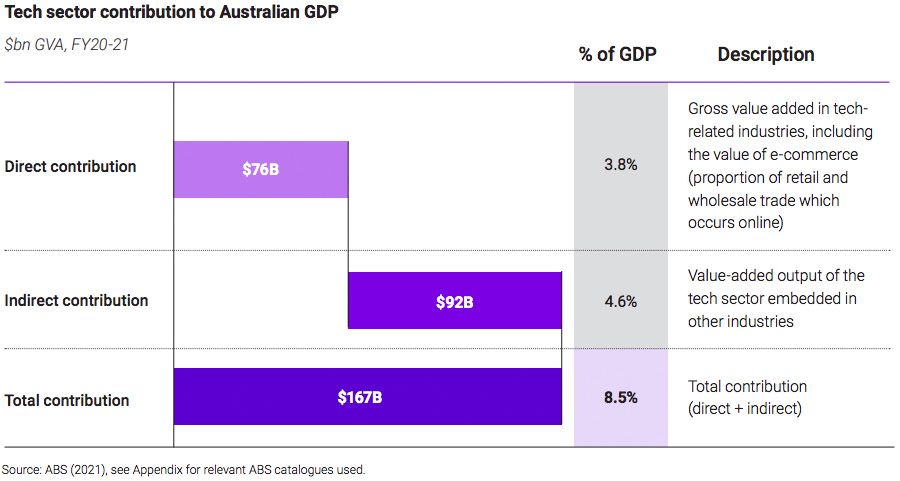
Most of Australia’s direct technology contribution comes from technology services and intelligence.

However, the indirect contribution of the technology is greater at $ 92 billion. In today’s digital era, technology is an integral part of the value chain and operation of most businesses in business, from traditional sectors like agriculture, retail and manufacturing to service companies like finance and professional services.
The growth potential of the technology sector means that it will actively cement its place as the mainstay of the Australian economy over the next decade, outperforming the contribution of the basic and manufacturing industries.
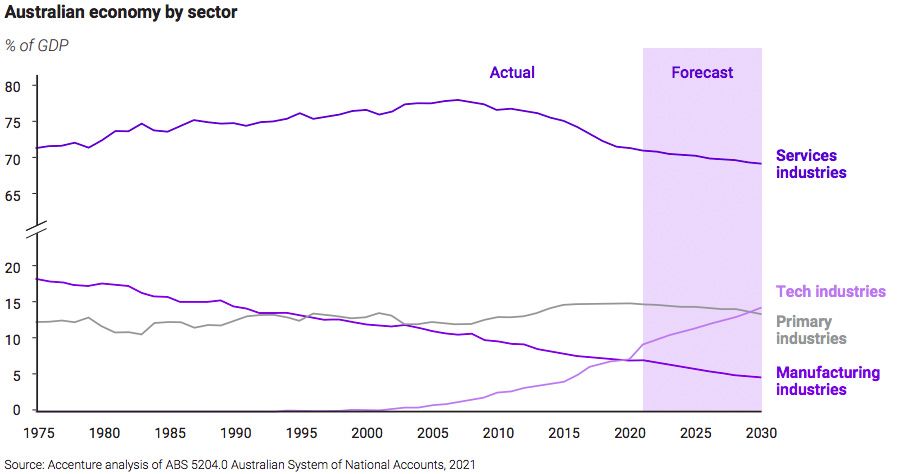
Employment in the technology sector
The technology sector is one of the largest producers of quality jobs for a variety of skills in Australia. Tech jobs are critical to the growth of tech companies and industries that use technology in their businesses, such as banking, agriculture, mining, retail, and manufacturing. Meanwhile, technology companies are also creating broader employment opportunities by hiring support professions in non-technology functions such as sales and marketing, administration, human resources, and legal.
Since 2005, tech jobs have increased 66%, compared to an average growth rate of 35% for the economy as a whole.

The technology sector is the seventh largest employer in Australia by total number of jobs.
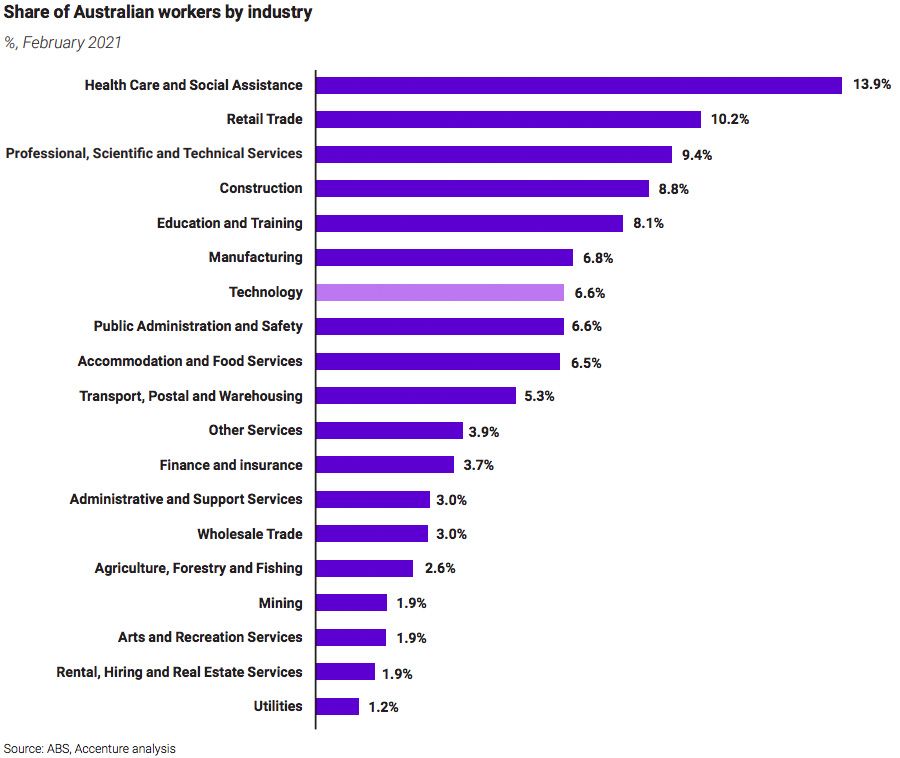
Tech job growth has diversified away from major capitals and is strongest in regional and suburban areas. The highest growth rates for ICT professionals are found primarily in the suburbs of Sydney and Melbourne, including Sydney’s Outer South West (including Campbelltown, Camden and Narellan) and Melbourne West (including Sunshine West, Williamstown and Altona).
Five of the ten fastest growing regions for ICT professionals are in southeast Queensland, with the highest average growth rates in East Brisbane. Regional cities, including Adelaide and Hobart, also saw strong growth in the number of ICT professionals.
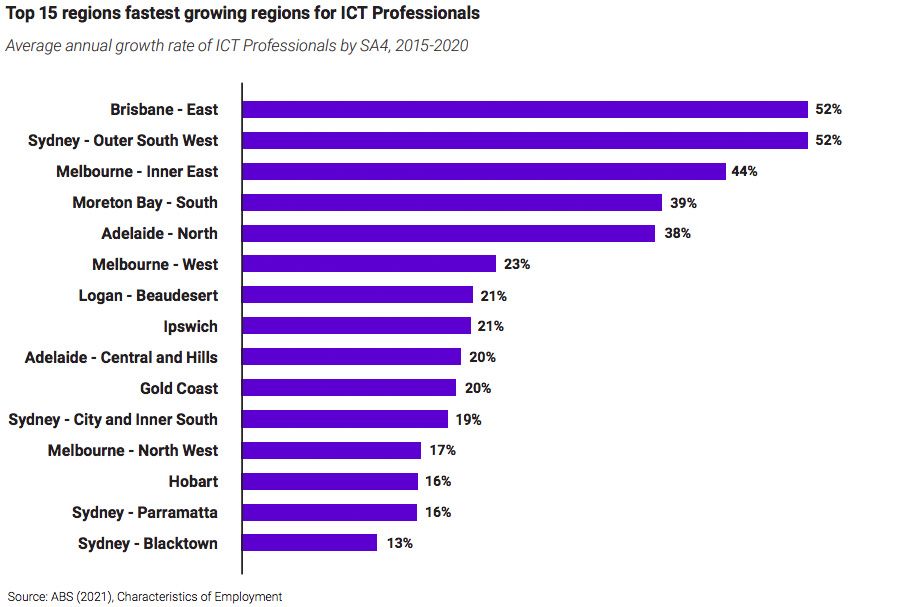
Promote the impact of the sector
According to the report by the Technology Council of Australia and Accenture, while the Australian technology sector has seen strong growth in recent years, persistent barriers to innovation and development have limited its size compared to its peers. For example, the direct technology sector contributes 3.8% to Australia’s GDP, which is well below the US (10.2%), UK (8.1%) and Canada (6.8%).
As a result, Australia has a significant opportunity to increase the tech sector’s economic contribution to catch up with its global competitors. For example, if Australia can match Canada’s contribution to the tech sector (Canada is chosen as the benchmark because it has an economy similar to Australia, with agriculture and mining sectors dominating) it could add $ 30 billion a year in additional economic value by 2031 to generate.
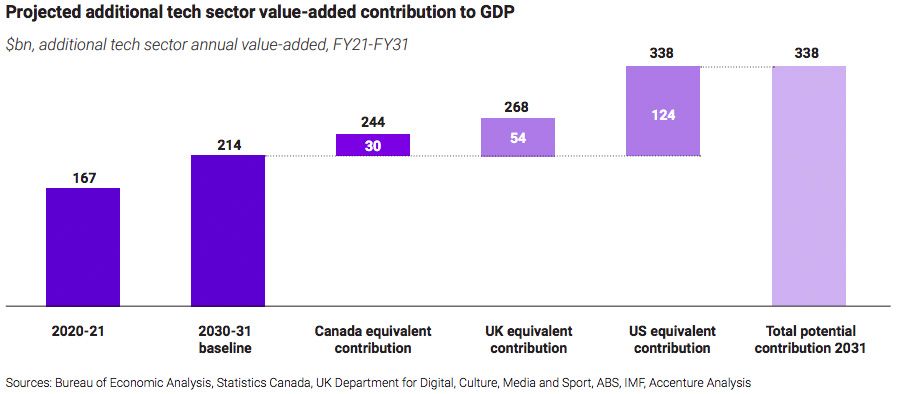
If ambitious stretch targets were set and Australia matched the current UK or US sector contribution over the next decade, it could achieve an additional economic value of $ 54 billion to $ 124 billion per year by 2031.
This additional growth could give a strong boost to employment in the technology sector. In a growth scenario where Australia can match Canada’s contribution to the tech sector, the tech sector will employ 1 million people by 2025 or another 141,000 over the next five years. In the UK or US stretch scenarios, between 277,000 and 638,000 additional workers could be employed in the technology sector annually in 2031.

Commenting on the report, Kate Pounder, CEO of the Technology Council of Australia (and former advisor to Accenture and McKinsey & Company), “The technology sector has matured and accelerated through the Covid-19 pandemic and is now a major growth driver in the economy 8.5% of GDP and employs one in 16 Australians. ”
“By meeting industry challenges and catching up with global competitors, Australia can achieve technology-enabled recovery, create (hundreds) thousands of new jobs and add billions to GDP annually. Government, in partnership with industry, should play a key role in seizing this opportunity. “

